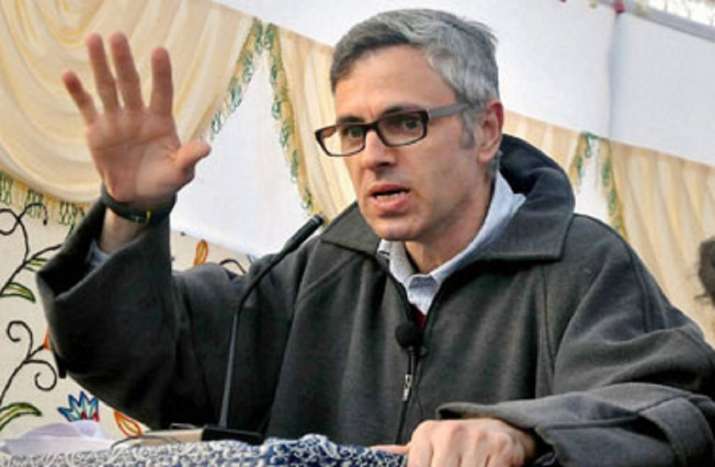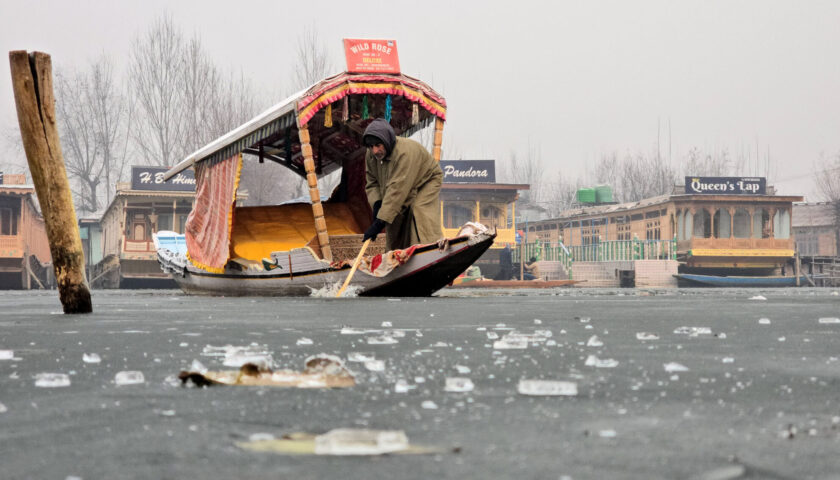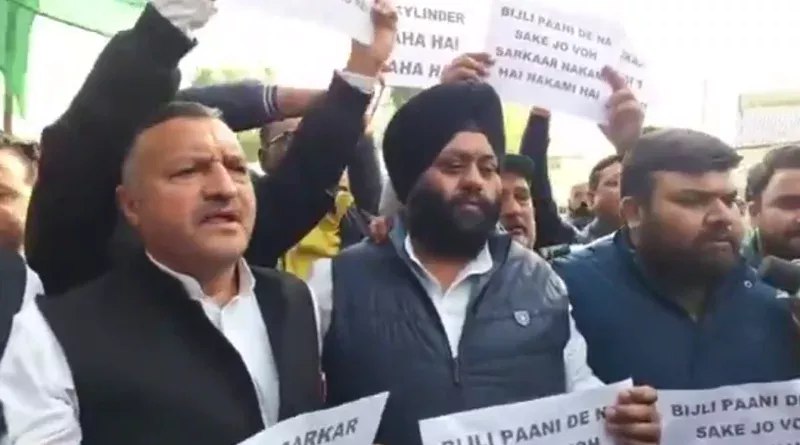A wave of anger has gripped the Valley anew following an aggressive and bloody counterinsurgency campaign.
On March 30, Jammu and Kashmir Chief Minister Mehbooba Mufti told delegates at a convention of the Travel Agents Association of India in Srinagar:
“We’ve invited you here for handholding us. Something happens in Kashmir, some encounter [gunbattle between militants and government forces] at a far off place, it appears on TV as if entire Kashmir was burning. Your coming here is like a whiff of spring, a good omen. Our situation is not hidden from anyone. If you look at the world, globally everywhere there are problems. But our problem is that our own country has also left us alone. Our job here is very tough… My father would always say that when a tourist visits us it’s an investment in peace… The way a soldier fights at the border; fights against militancy in Jammu and Kashmir, that is one way of fighting. The other way to fight is that you [tourists/tourism promoters] come here, we feel alienation here, and we’re part of such a big country…”
Mufti’s father, the late Mufti Mohammad Sayeed, a two-time chief minister of the state, may have called the promotion of tourism an investment in peace, but many in Kashmir have long understood it to be part of the counter-insurgency campaign the current chief minister openly propounds it to be.
On that day, the convention declared 2018 the “Year of Visiting Kashmir”. Two days later, a series of gunfights across South Kashmir left 20 dead, including civilians, militants and soldiers. Dozens received bullet and pellet injuries. Kashmir was indeed burning as a renewed and intense wave of anger and protest gripped it yet again.
Mufti’s address to the tourism convention on the banks of the Dal Lake was a desperate reaction to the hollowing out of the militarised, pro-India political space in Jammu and Kashmir, a process that appears to be on steroids since Prime Minister Narendra Modi took charge in New Delhi in 2014.
Since the civilian unrest of 2016 that left over 100 people dead, Mufti has struggled to shore up the fast-falling credibility of her People’s Democratic Party government – which is in an alliance with Modi’s Bharatiya Janata Party – in the face of the wave of anger blowing across the Valley.
Following militant commander Burhan Wani’s death in July 2016, which led to the unrest and energised the militant mood in Kashmir, Mufti has seen a whole arsenal of counterinsurgency methods evolved over decades by the military apparatus – including tourism promotion – fail to bring peace to the restive state. Instead, there has been a tectonic shift in the political landscape with the militant cause garnering huge public support.
“The renewed support to militancy and the degree of public indifference to mainstream politics and politicians has lasted long enough for all to be taken note of,” said a political scientist at the University of Kashmir, who did not want to be identified. “It would be a mistake to ignore it for its yet unknown consequences.”
Elections the first casualty
The first indication of the shift came last April when voters virtually boycotted the violence-marred bye-election to the Srinagar Lok Sabha seat: an abysmal 6% voted (which was still better than the 2% who turned up for the re-poll in some booths). Eight people died on polling day and a Kashmiri man was tied to the front of a military jeep, as a human shield to deter stone-pelting protestors, and driven through several villages. That image still haunts, like a neon-lit billboard in the Kashmiri mindscape.
Holding an election has always served the rulers in Kashmir and Delhi well in their attempts to wipe the slate clean after almost every major phase of azadi protests and the devastating human cost of the state’s response to them.
But such has been the shift on the ground and in the public mood after July 2016 that the state government has not had the confidence to hold long-due panchayat elections, despite an official announcement last year to conduct them.
What’s more, the Anantnag parliamentary seat Mufti vacated when she became chief minister after her father’s death has been vacant for two years now. A bye-election was announced but later cancelled on the advice of a shaky security establishment. That election seems impossible at least till the Lok Sabha polls next year.
Regular elections in Kashmir as a counter to militancy and the separatist campaign against Indian rule have always been touted by officialdom in Delhi and Srinagar as India’s biggest achievement in the state. They speak of elections as “repeated referendums” in India’s favour. But the space for that exercise appears to have shrunk considerably since 2016.
“That is the writing on the wall today for Delhi,” the political scientist from the University of Kashmir said. “Everyone from Modi to Mehbooba is responsible.”
PDP losing relevance
Regular elections amid an insurgency had helped resurrect and nurture so-called mainstream, pro-India politics in which mundane demands like bijli, sadak and pani co-existed with the demand for a political resolution of the Kashmir dispute.
But with the BJP ruling at the Centre and sharing power in the state, the political aspect of the Kashmir conflict has been almost completely exorcised from the discourse. This has rendered parties like the People’s Democratic Party and the National Conference near irrelevant in the eyes of the voters they consistently wooed with the promise of a Kashmir resolution.
“Earlier it used to be a combination of some notional reconciliation process and military heavy-handedness that managed Kashmir for New Delhi,” said Siddiq Wahid, historian and former vice-chancellor of the Islamaic University of Science and Technology in Kashmir. “Now its just the latter.”
Consequently, support for the new militancy is deepening.
Mufti’s meek surrender
All this has made Mufti come across as helpless in the eyes of her people. She is often seen as compromising the foundational aspects of her party’s ideal of “self-rule”.
This was how her act of unveiling a statue of Hari Singh, the last Dogra king of Kashmir, in Jammu last month was perceived. The Dogra rule in Kashmir is considered one of the most tyrannical in its history, the fight against which laid the foundation for modern organised politics. In popular perception, the chief minister unveiled the statue under pressure from BJP ministers in her cabinet, who are feeling the heat of their disgruntled constituencies in Jammu and for the party’s failure to abrogate Article 370 of the Constitution of India, which grants the state special, autonomous status.
In the same month, the chief minister’s meek manner drove her to sack her finance minister Haseeb Drabu for saying that Kashmir was “not a political issue” but a social one – lest her party be seen as not working for a political resolution of the Kashmir question.
That no one protested Drabu’s ouster is another indication of the Kashmiri people’s growing indifference to the mainstream parties.
Yet, Mufti could do little when two of her cabinet colleagues from the BJP participated in a rally in support of a police officer and a civilian accused of raping, torturing and killing an eight-year-old girl in Kathua district.
“This is the most powerless a J&K chief minister has ever looked,” Wahid said. “She [Mehbooba] has abdicated.”
Biggest challenge yet
Security officials say they expect another phase of widespread protests. “That too will be controlled,” said a senior security official on condition of anonymity. “But with every cycle of protests and what it takes to crush them, our worry is that Kashmir looks more and more like it actually is, a military-controlled state.”
The nature of protests in Kashmir has also changed. Up till 2010, protestors generally marched to the Srinagar office of the United Nations Military Observer Group in India and Pakistan, demanding a plebiscite. This changed in 2016. Since then, protestors have gone straight for the security apparatus, attacking police stations, Army and paramilitary camps.
But even with the situation as it is, elections will have to be held in the state sooner or later, be it for parliamentary or Assembly seats or for the panchayats. The People’s Democratic Party’s loss of credibility may not be the National Conference’s gain. But if the public mood in Kashmir remains as it has since 2016, this might turn out to be the biggest challenge the state has faced since the outbreak of militancy in the 1990s.




